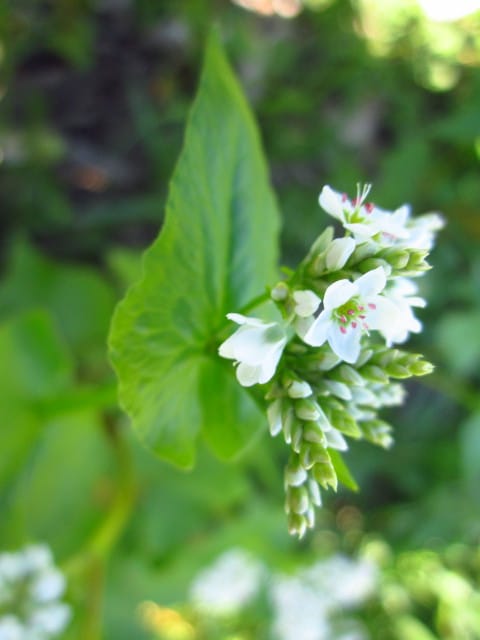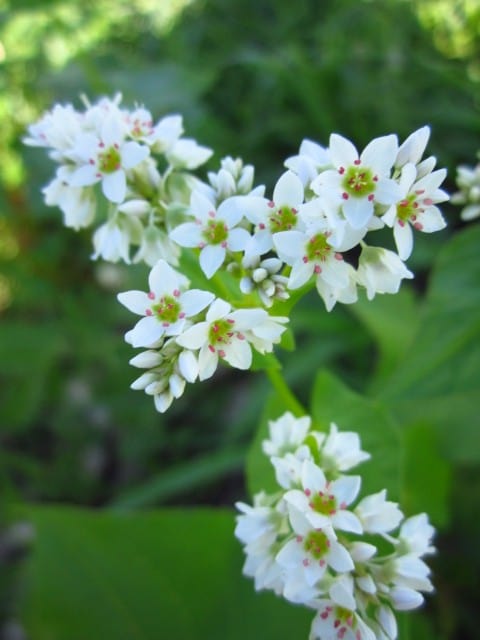
Brought to America in the 1600s by Dutch settlers, buckwheat is on the mind of the average American only when its name is followed by the word pancakes. The plant, Fagopyrum esculentum, was domesticated in Asia some 5,000 to 6,000 years ago and spread in cultivation across Europe. In the U.S. buckwheat was historically grown in highest acreage in Pennsylvania and New York. The greatest acreage has now shifted to the north-central states, hence the relevance for buckwheat field research trials on the University of Minnesota, St. Paul Campus.

Fagopyrum esculentum follows the forb/herb growth pattern, meaning it is a vascular plant with little woody tissue aboveground. It belongs to the Polygonaceae or buckwheat family. Also within this family is the California buckwheat, though of a different species, which I became familiar with when sampling hives for the 2012 National Honey Bee Disease Survey in Southern California.

As for its value as a crop, buckwheat has the benefit of being productive late in the season allowing farmers in states with appropriate soil and weather conditions to utilize it as a double-crop. According to the Northeast Buckwheat Growers and Cornell University, the crop may even be suitable to plant in high-fertility fields when a wet spring delays corn and soybean planting to the point that late planting of these commodity crops may prove uneconomical to the farmer. 2013 definitely yielded a wet spring in Minnesota and North Dakota.

Buckwheat serves subsequent crops by making phosphorus available in the soil and by acting as a smother crop to discourage weed growth without herbicides. According to University of Missouri Extension, “buckwheat has few reported pests, perhaps because the crop is not extensively grown […] Overall, pests are unlikely to cause any significant loss in a buckwheat field.” What more could a farmer ask for?

She could ask for her favorite beekeeper to set a load of hives next to the crop that’s what! Buckwheat can supply a steady source of pollen and nectar in late summer up until harvest or frost under optimal conditions. The National Honey Board describes buckwheat honey as “dark and full-bodied” and as “contain[ing] more antioxidant compounds than some lighter honeys.” Descriptors that come to mind for me are complex, tangy, and reminiscent of Tootsie Rolls. Whether one loves buckwheat honey or hates it, there’s no doubt it can be a good option for the farmer and a great resource for the beekeeper.

To help increase acreage of my favorite pseudocereal I urge you to wield your consumer power and try one of these 442 recipes using buckwheat next time you plan a meal. Who knows maybe your next breakfast will include a steaming bowl of buckwheat groats! More information on buckwheat can be found at the following websites:
United States Department of Agriculture
University of Cornell, College of Ag and Life Sciences
University of Missouri, Extension
Purdue University, Horticulture